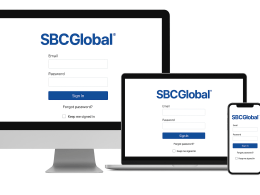Google’s Update: Inactive Account Deletion Starts in December
In the ever-evolving landscape of online security, Google, the tech giant we all rely on, is once again taking a significant step towards safeguarding its users’ data. Starting this December, Google will implement a crucial security update by deleting inactive accounts. This development is poised to have a far-reaching impact on the way we manage our digital presence and underscores Google’s unwavering commitment to user privacy.
Why is Google Taking This Step?
Google’s decision to delete inactive accounts is rooted in the company’s dedication to data security. Over time, many users accumulate vast amounts of data on their Google accounts, including emails, photos, and documents. While this data is essential, inactive accounts can become targets for hackers and pose a potential security risk. By deleting these accounts, Google aims to mitigate such risks and enhance the overall safety of its platform.
What Constitutes an Inactive Account?
To provide clarity to its users, Google has outlined specific criteria for what constitutes an inactive account. An account will be considered inactive if:
- The user hasn’t signed in for at least two years.
- No Google services, such as Gmail, Drive, or YouTube, have been accessed during this time.
- There has been no significant account activity, such as email communication or file uploads.
If your Google account meets these criteria, it will be marked for deletion.
How Can You Prevent Deletion?
For users concerned about the potential deletion of their accounts, Google has laid out a simple yet effective solution. To prevent your account from being deleted, all you need to do is sign in and engage with any Google service before the December implementation date. This straightforward action will reset the account’s inactivity clock and ensure the safety of your data.

What About Data Recovery?
Google understands that some users may have important data stored in their inactive accounts. To address this concern, the company will allow data recovery for a limited time after account deletion. However, it’s crucial to act promptly if you wish to retrieve your data. Google will provide clear instructions on how to initiate the data recovery process.
A Comparative Overview
Let’s take a moment to compare this new Google security update with the current practices of other major tech companies:
| Company | Security Update | Data Recovery |
|---|---|---|
| Inactive Account Deletion | Limited data recovery after deletion | |
| Regular password updates | Account recovery through trusted contacts | |
| Apple | Two-factor authentication | iCloud data recovery |
| Microsoft | Periodic security checkup reminders | Data retrieval for a limited time |
As we can see, Google’s approach aligns with the growing need for proactive security measures in the tech industry. While it’s essential to stay vigilant about your data across all platforms, Google’s inactive account deletion provides an additional layer of security for its users.
Conclusion
In an era where data security is paramount, Google’s decision to delete inactive accounts demonstrates its unwavering commitment to safeguarding user information. By implementing this security update, Google aims to reduce the potential risks associated with dormant accounts, ultimately enhancing the overall safety of its platform.
To ensure your data remains untouched, remember to log in and use any Google service before the December deadline. This simple action will protect your digital footprint and keep your valuable information safe.
As we move into an increasingly digital world, it’s reassuring to know that companies like Google are taking proactive steps to protect their users. Embracing these security updates is not just a matter of convenience; it’s a commitment to preserving the privacy and integrity of our online presence.












